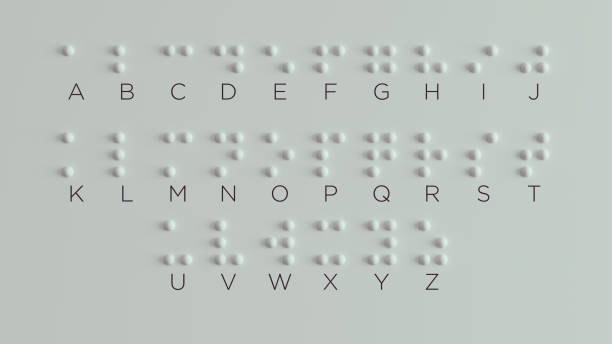
The Internet is a major force in modern life. Every person or organization uses online tools in some form. However, accessing digital services remains a challenge for people with disabilities.
Web accessibility entails designing websites that people with disabilities can easily use and navigate. People rely on the Internet for everything from banking to shopping, communication, booking holidays, job applications, and tax filing. Inaccessible websites can cause headaches for people with sensory or physical disabilities.
Why do you need an accessible website?
Building a better world
Challenged people already face enough obstacles in their daily lives; the internet doesn’t need to add more problems. Building accessible websites makes life easier for people with disabilities, as they won’t have to struggle to do things others can do easily.
Let’s look at some relevant statistics:
- At least 2.2 billion people have visual impairments, according to the World Health Organization (WHO)
- Only 6% of the global population are Native English speakers, and 75% don’t speak English at all (Cochrane). Unfortunately, many websites with a worldwide audience focus mainly on English-speaking users and neglect other languages.
- 5% to 9% of the general population have learning disabilities (National Library of Medicine).
- About 1 in 36 children have autism spectrum disorder, according to the U.S. Centers for Disease Control and Prevention (CDC).
The above stats show that a substantial part of the global population has one disability or the other. Hence, inaccessible websites make life more complicated for billions of people worldwide. Web accessibility helps avert this issue and makes daily life more pleasant for them.
Increasing your target audience
Even if one considers the idea of building a better world fuzzy, web accessibility makes good business sense. It increases the size of websites’ potential customer base and generates more revenue in the long run.
Inaccessibility means restricting over 1 billion people with disabilities from interacting with your website, people with money to spend that represents a significant portion of global economic activities. In contrast, web accessibility widens your customer net and allows you to generate more revenue from your website because everyone can easily use it.
Regulatory compliance
Many jurisdictions require websites and apps to be accessible, and non-compliance can spur serious penalties. For example, ride-hailing platform Uber was once fined $2.2 million over allegations that it charged disabled passengers excessive wait fees because they spent more time getting into their assigned vehicles than non-disabled passengers. In 2024, Uber was also fined C$35,000 after a Canadian court ruled that it discriminated against a disabled passenger.
In the above case, it’s not that Uber detested disabled passengers. Instead, the company spent too much time and effort on conventional users and neglected to build custom features for passengers with disabilities. Ignorance of the law is not an excuse, so the company had to pay significant fines and agree to incorporate disability-friendly features.
If you’re operating in a jurisdiction with web accessibility rules, you must comply with these rules or risk significant fines and alienating a substantial customer base.
Web accessibility laws to know about
Let’s examine some prominent web accessibility regulations that every developer should know about:
- The Americans with Disabilities Act (USA)
- The European Union Web Accessibility Directive (EU)
- The Equality Act (UK)
- Disability Discrimination Act (Australia)
- Accessible Canada Act (Canada)

Americans With Disabilities Act (USA)
The Americans With Disabilities Act (USA) is a civil rights law passed by the United States government in 1990 prohibiting discrimination based on disability. This law requires all businesses operating in the American market to make reasonable adjustments to provide equal enjoyment of their services to people with disabilities.
ADA compliance for websites largely involves enabling blind or visually impaired users to enjoy the site’s features. They should be able to fill out application forms, take courses, and enjoy whatever content is on your website. You can do this by
- Using colors and textures that provide sufficient contrast.
- Including alt text in all images to enable screen readers to dictate the image. description
- Enabling manual font size adjustment for the visually impaired.
- Enabling keyboard shortcuts.
- Using explicit labels for links and buttons.
European Union Web Accessibility Directive (EU)
The European Union passed a web accessibility law in 2016, requiring public sector bodies to make their websites and mobile apps accessible. This law doesn’t oblige private companies, but the similar European Accessibility Act set to take effect in 2025 covers private firms, and it’s wise to begin complying as that time nears. Designing a website compliant with EU laws primarily revolves around
- Providing transcriptions for video and audio recordings.
- Ensuring the website is fully navigable with only a keyboard.
- Using uppercase letters for each word in a hashtag, e.g., #CancerAwarenessMonth.
- Giving clear instructions on web forms.
- Providing sufficient contrast between text and background colors.
- Enabling users to enlarge the text font up to 200%.
- Ensuring images have descriptive alt tags (Besides, this is also good for search engine optimization).
The Equality Act (UK)
The UK government passed the encompassing Equality Act in 2010, banning various forms of discrimination, including discrimination against disabled persons. This law merged dozens of pieces of legislation into one single Act that was easier for public and private organizations to follow.
The Equality Act required businesses to make their websites and mobile apps more accessible, with a focus on images, audio, and videos. The tips for complying with this law are similar to what we’ve mentioned in the above sections.
Disability Discrimination Act (Australia)
The Australian government passed the Disability Discrimination Act in 1992, making it illegal to discriminate against a person in many aspects, including disability. Your website can easily comply with this law by imbibing the tips we’ve mentioned in other sections.
Accessible Canada Act (Canada)
The Canadian government passed the Accessible Canada Act in 2019, requiring all federally regulated organizations to refrain from discrimination based on disability. This law requires websites to comply with at least the WCAG 2.0 requirements.
The web content accessibility guidelines (WCAG)
The easiest way to make your website accessible is by following the formal Web Content Accessibility Guidelines (WCAG). These guidelines were formalized by the World Wide Web Consortium, the organization responsible for developing standards for the World Wide Web.
Most regulators base their web accessibility rules on the WCAG standard. Complying with this standard puts you on the good side of both users and global regulators.
WCAG 2.0, the current version of these guidelines, was released in 2008. An updated WCAG 2.1 was released in 2018; another updated WCAG 2.2 was released in 2023. These were minor updates that didn’t change much about the original guidelines.
A third revamped edition (WCAG 3.0) is currently in the works but hasn’t reached completion. WCAG 2.0. is the version that most organizations follow.
Here are the 12 WCAG 2.0 guidelines you should know about:
1. Providing text alternatives for non-text content
Every non-text content in your website should have a text alternative that serves the equivalent purpose, except in a few cases, like decorative content that serves no value outside aesthetics.
We’ve already talked about including alt descriptions for every image. Blind or visually impaired people might not see your images, but their screen-reading software can dictate the description and let them know what it’s about.
Providing text transcriptions for the videos and audio on your website is also advisable. This way, people who are both deaf and blind can use their Text-to-Braille translator to understand what the video or audio is about.

2. Providing alternatives for time-based media
Time-based media refers to video, audio recordings, presentations, or anything that plays over a specific period. This guideline requires providing a transcript for audio and video recordings on your website. This way, someone who is deaf but has good vision can read the captions and understand what the video or audio is about.
3. Creating content that’s presentable in different ways
The content on your website should be presentable in different ways without losing information or structure. We’ve talked about allowing users to increase the font size by 200% - this is one of the reasonable adjustments from this guideline.
Another aspect is using the right code to define content and the relationships between them. For example, always use the
4. Make it easier for users to hear and see content
If any audio or video on your website plays automatically for more than 3 seconds, ensure you provide a mechanism for the user to pause or stop the audio and to control the volume independently from the overall device volume.
Use contrasting colors to differentiate to separate a web page’s foreground from the background, making it easier for visually challenged people to see your content.
5. Make all functionality keyboard-accessible
A user should be able to control all functionality on your website from a keyboard. This guideline involves incorporating keyboard shortcuts for navigating your website. It helps individuals with physical disabilities to navigate your website even when they can’t use a mouse like other users.
6. Provide enough time for users to read and see content
Users with disabilities need more time to respond and interact with content. They take longer to physically respond and longer to find and read things because of their challenges. Hence, you should provide enough time for your website users to interact with content even if they’re using assistive technology. Users should be able to turn off or adjust time limits on your website.
7. Don’t design content that can potentially cause seizures
Many people are photosensitive, i.e., have abnormal reactions to light. Rapid flashes are one of the main things that trigger this photosensitivity, so you should avoid it as much as possible. Remove any visual content that flashes over three times in one second.
8. Make content easily navigable
Your website’s content should be easy for users to navigate:
- Web pages should have titles that describe their purpose.
- Allow users to navigate webpages sequentially.
- The purpose of each link should be determinable from the link text alone.
9. Make content easily readable and understandable
Your website’s content should be easily readable and understandable in these ways:
- Provide the meaning of every abbreviation at least once.
- In most circumstances, text should not require reading ability more advanced than the lower secondary education level.
- The language of each passage or phrase should be determinable by assistive technology. In other words, use clear and simple language.
10. Make your web pages operate in predictable ways
Build your web pages such that changing any user interface component does not automatically trigger a “change of context,” referring to a change that a visually impaired user will likely not notice because of their limited vision.
Another aspect of this guideline is that your website’s navigational features should be uniform across all web pages to avoid confusing visually impaired users.
11. Help users detect and correct mistakes
If an error is automatically detected, it should be clearly written in text for the user. For instance, if someone types in a wrong password, the error should state "wrong password," "incorrect password," or something similar. This way, screen reading software can dictate the error to a visually impaired user. Your website should also provide suggestions for correcting the error, except in cases where it would jeopardize security.
Your website should have mechanisms for reviewing, confirming, and correcting information before a user finally submits it.
12. Maximize compatibility with assistive technology
Implement technical features that maximize your website’s compatibility with assistive technology.
Elements should not contain duplicate attributes. They should be nested according to specifications and have complete start and end tags. This way, assistive software can easily understand what a web page is about and relay the information to the user.
All user interface components on a web page should be easily understood by software that can relay this information to users with disabilities.
Final words
We’ve explained web accessibility and its importance. This article dove deep into the formal guidelines for building an accessible website. Follow our tips, and you’ll likely build an accessible website that all users will enjoy.
More from Tech Radar Pro
- We've also listed the Best web accessibility service of 2024
- We've also listed the Best website monitoring software of 2024
- Enhancing website accessibility in a multichannel world







